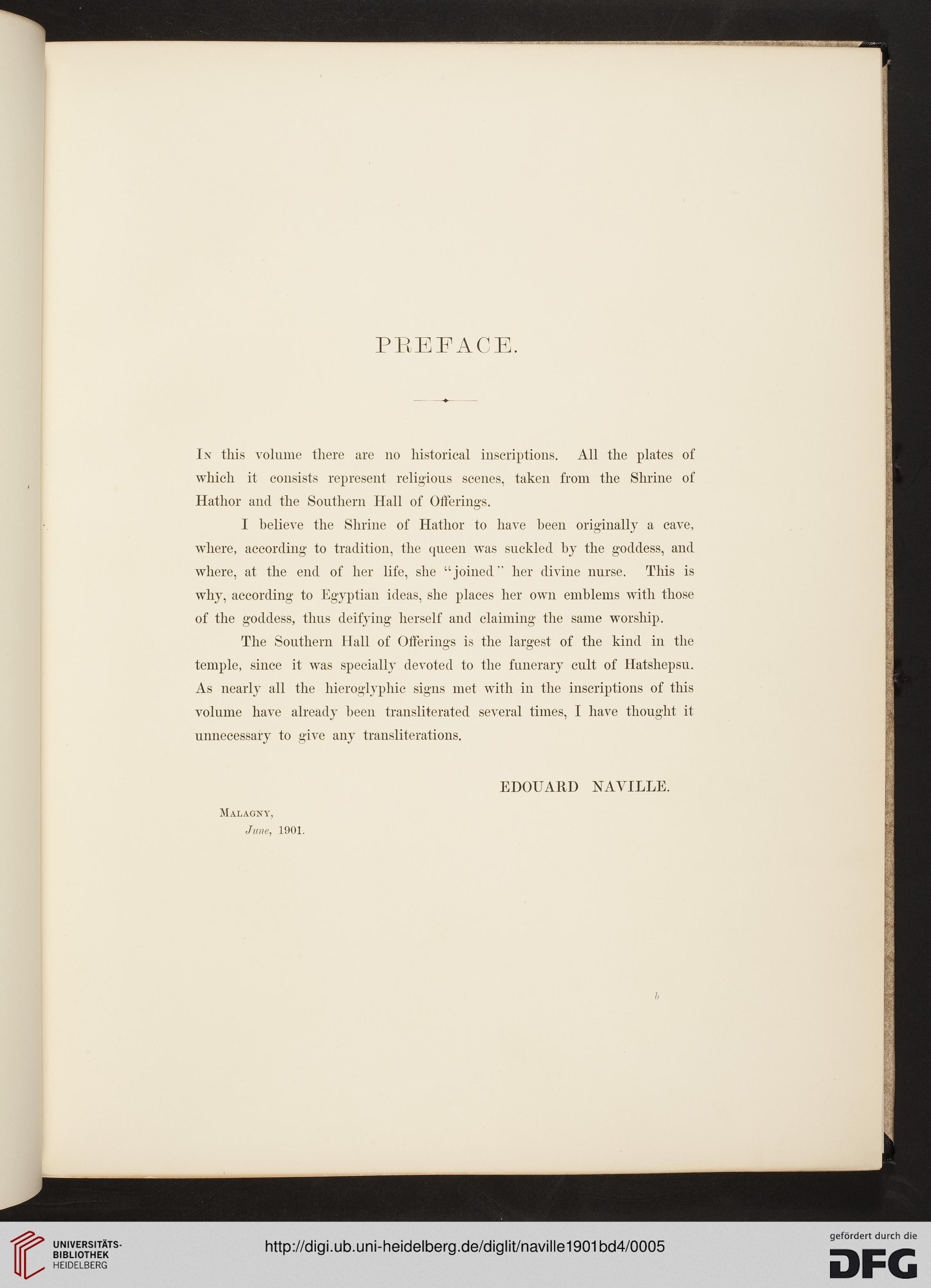PREFACE.
In this volume there are no historical inscriptions. All the plates of
which it consists represent religious scenes, taken from the Shrine of
Hathor and the Southern Hall of Offerings.
I believe the Shrine of Hathor to have been originally a cave,
where, according to tradition, the queen was suckled by the goddess, and
where, at the end of her life, she "joined" her divine nurse. This is
why, according to Egyptian ideas, she places her own emblems with those
of the goddess, thus deifying herself and claiming the same worship.
The Southern Hall of Offerings is the largest of the kind in the
temple, since it was specially devoted to the funerary cult of Hatshepsu.
As nearly all the hieroglyphic signs met with in the inscriptions of this
volume have already been transliterated several times, I have thought it
unnecessary to give any transliterations.
EDOUARD NAVILLE.
Malagny,
June, 1901.
In this volume there are no historical inscriptions. All the plates of
which it consists represent religious scenes, taken from the Shrine of
Hathor and the Southern Hall of Offerings.
I believe the Shrine of Hathor to have been originally a cave,
where, according to tradition, the queen was suckled by the goddess, and
where, at the end of her life, she "joined" her divine nurse. This is
why, according to Egyptian ideas, she places her own emblems with those
of the goddess, thus deifying herself and claiming the same worship.
The Southern Hall of Offerings is the largest of the kind in the
temple, since it was specially devoted to the funerary cult of Hatshepsu.
As nearly all the hieroglyphic signs met with in the inscriptions of this
volume have already been transliterated several times, I have thought it
unnecessary to give any transliterations.
EDOUARD NAVILLE.
Malagny,
June, 1901.




